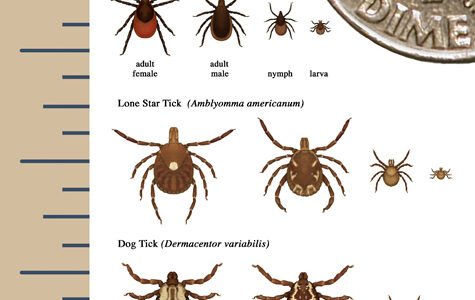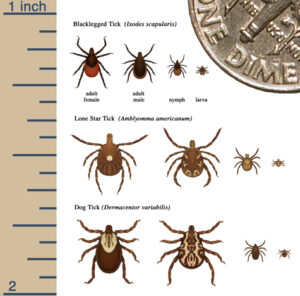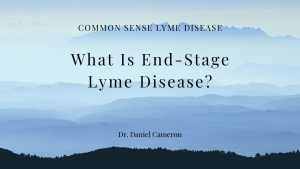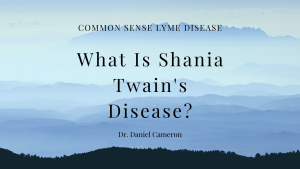Call for your appointment today 914-666-4665 | Mt. Kisco, New York

According to investigators from the Centers for Disease Control and Prevention (CDC), larval ticks can already be infected with Borrelia miyamotoi, after they hatch from the eggs. [1] This occurs through a process called transovarially transmission in which the adult tick transmits the B. miyamotoi bacteria to its offspring by infecting the eggs in its ovary.
 There is evidence that infected blacklegged female ticks can pass Borrelia miyamotoi to their offspring, researchers say.
There is evidence that infected blacklegged female ticks can pass Borrelia miyamotoi to their offspring, researchers say.
Researchers infected experimental mice with Borrelia miyamotoi, the relapsing fever bacteria. They found that “minimal or partial blood meals by single-feeding transovarially B. miyamotoi-infected larvae also resulted in approximately half of experimental hosts developing infections detectable by examination of blood for presence of B. miyamotoi DNA,” writes Breuner from the CDC’s National Center for Emerging and Zoonotic Infectious Diseases.
[bctt tweet=”Larval ticks need to be taken seriously, as new research finds they can transmit the relapsing fever spirochete Borrelia miyamotoi. ” username=”DrDanielCameron”]
The authors suggest that public health officials consider revising the message for tick bite prevention campaigns to include larval ticks and the season they are most active – July and August. This is a time of year when people spend a lot of time outdoors, the authors state, and may be less vigilant protecting themselves from tick bites, as they mistakenly perceive this to be a safer season.
Related Articles:
Larval ticks may be a threat after all – insights based on study of B. miyamotoi
Study demonstrates further evidence larval ticks may be a threat to humans
Will eliminating deer help stop the spread of infected ticks?
References:
- Breuner NE, Hojgaard A, Replogle AJ, Boegler KA, Eisen L. Transmission of the relapsing fever spirochete, Borrelia miyamotoi, by single transovarially-infected larval Ixodes scapularis ticks. Ticks Tick Borne Dis. 2018.




Lone Stars also transmit some infections transovarially.
So if you have had chiggers could you have lyme or another tick borne illness?
No. I posted an story about the association of a chigger bite with alpha-gal allergy (red meat allergy). These stories will hopefully trigger further research. You can read the story I posted at https://www.facebook.com/plugins/post.php?href=https%3A%2F%2Fwww.facebook.com%2Fdanielcameronmd%2Fposts%2F2204587233160186
Hi Dr. Cameron, I know this article is from a few years back, but thought I’d try my luck in getting in touch with you! Do you know what percentage of larval ticks are suspected of being infected with borrelia miyamotoi in states like CT? Thank you!
I have not seen any information on how often Larval ticks harbor B. miyamotoi or B. burgdorferi.
Thank you!
Hi Dr Cameron,
Can a larvae deer tick transmit Lyme disease to a human? Thanks so much
Transovarially transmission has been considered in tick borne disease, that is the infection passes through the egg to the larva. I have not seen much research in this area.
Hi Dr. Cameron,
I believe I have been bitten by a larval deer tick. (viewed under microscope, six legs, all mouth “prongs” intact. I recently finished a two week course of Doxycycline for an infected lone star tick bite. I removed the larval tick two days ago, and I believe I caught it well less than 24 hours after attaching, though I can’t be sure. I was given Doxycyline from my dermatologist for prophylaxis. He said I should take one 100mg pill. Do you think this is necessary for a larval tick bite that is not infected, or is this not enough and I should look into another full course of Doxy? Obviously I need to do a better job protecting myself in the future. Thanks in advance.
The prophylaxis dose should have been 200 or two 100 tablets. I am not supportive of a single dose prophylaxis approach. Read my perspective.vv https://danielcameronmd.com/perspective-dont-trust-single-dose-doxycycline-to-prevent-lyme-disease/
There has been no study of prophylaxis for a larval tick.
Thank you, I chose not to take the medication in this case. I did not identify the tick properly, either. Upon turning it over and looking closer, I actually think it may be a nymph, unfortunately. Either a lone star or deer tick nymph. I am caring for the bite site carefully, and have chosen to do “watchful waiting.” I have no idea if I’m doing the right thing. I don’t know if jumping into another several weeks of Doxycyline therapy after just completing two weeks is a good idea, either. I am located in central NC.